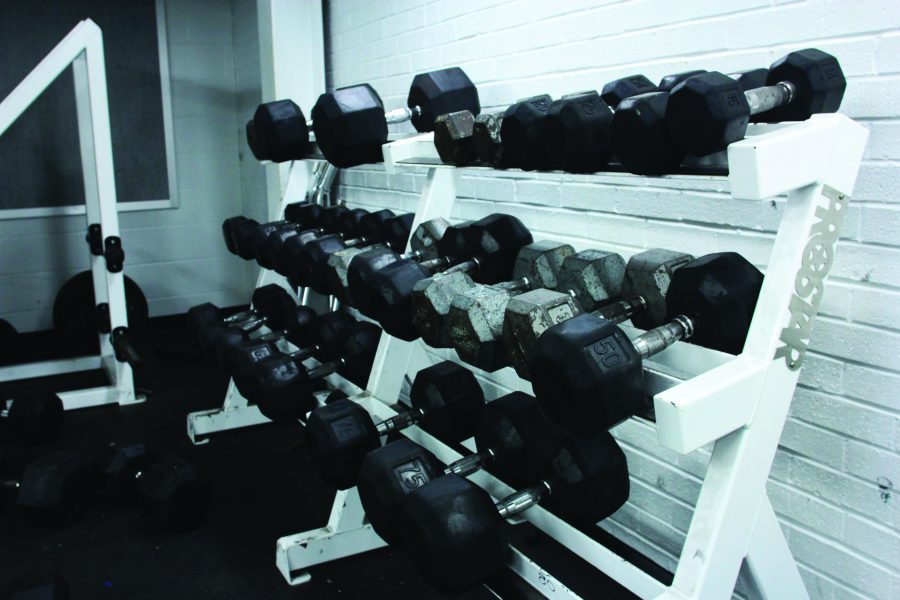
On the Friday afternoon of Jan. 10, senior Campbell Thompson lay on her side as a man she has just met used an electric needle to puncture the skin behind her right ear roughly 150 times a second and fill the wounds with permanent black ink.
She now has a small crescent moon etched behind her ear.
Thompson is one of the 45 million Americans who have at least one tattoo, according to the Pew Research Center. Each one of these people willingly allowed someone else to make puncture wounds deep in their skin and them fill them with ink. Though this practice is common today, its roots trace back to circa 1000 B.C., according to the Smithsonian website.
Historians speculate that the tattoos archeologists found on ancient Egyptians and Icemen served therapeutic and perhaps even religious roles. While for some ancient Egyptian women, tattoos served as the mark of a prostitute; for many others, they may have functioned as a permanent amulet – a way of safeguarding them during pregnancy and delivery– according to the Smithsonian website. Archeologists also found placement of inked dots as well as an image of the Egyptian deity Bes who was the protector of women in labor on Egyptian women’s abdomens, thighs and breasts.
Though this phenomenon may have started as a foreign one, it eventually made its way into the western world. According to pbs.org, in 1846 Martin Hildebrant set up a tattoo parlor in New York City and began tattooing sailors and military men during the Civil War. After New York inventor, Samuel O’Riley patented the first electric tattoo in 1891, they became much more accessible and attainable, since before then only battery powered machines existed. But even then people with full-body tattoos were things to be seen in circus shows, according to National Geographic Magazine. Tattoos remained markers of sailors and war veterans.
The popularity of tattoos exploded in the 1990s, according to the Washington Post, and has only continued to rise since then. The Huffington Post would link the growing popularity to the media. TV shows like “Miami Ink,” “NY Ink,” “LA Ink” and “Ink Master” exposed the general public to the tattoo industry, making them more comfortable with tattoos and also creating role models out of the casts of the shows.
Thompson never watched any of these shows. Instead, she said that she always wanted a tattoo and has known what she wanted to get for some time. Her tattoo is representative of the connection Thompson has with her grandmother.
“There used to be a huge stigma against [tattoos] because there was, like, an image behind [people with tattoos],” Thompson said. But “I think it’s also really trendy right now to get one … People realize that [a tattoo] doesn’t characterize you as a person.”
Though Thompson, like the war veterans and sailors of the early 20th century, just sees tattoos as a form of expression, for others their reasons for not getting tattoos go deeper.
For senior Mikayla Bessey, her religion poses a serious factor in her decision to never get tattoos.
“Due to my personal and religious beliefs, I believe that my body is a gift from God and that I should not defile it with tattoos,” Bessey said. “If your dad bought you a new car, you wouldn’t want to graffiti it.”
Though Bessey thinks that people are more open to expressing themselves through tattoos now than in the past, she believes that tattoos, like any other fad, will eventually go out of style. However, the numbers would point the future of tattoos in a very different direction.
While only six percent of the silent generation (individuals now aged 65 years and older) have tattoos, 42 percent of the Millennial generation (individuals aged 18-29) have tattoos, according to the Pew Research Center. And if this trend continues, more and more people are likely to get ‘inked,’ Thompson said, and not just for purposes of protection while giving birth.
“I think by the time we’re older, most people will have a tattoo,” Thompson said. A tattoo is “a way to personalize yourself and it’s something that you want, that you’ve chosen to have on you because other things about your body you can’t choose … It’s something that you can choose and you have control over that you can put on yourself.”
By Trisha Chaudhary


















































































Riley Martin • Apr 10, 2014 at 5:28 pm
I find this really interesting that our generation is now almost half tatted in some form. However it is concerning for those who only get them “because everyone else does” those people are likely to regret it in the future especially if they go out of style. Personally I wouldn’t want anything modified on my body I couldn’t change my mind on later.